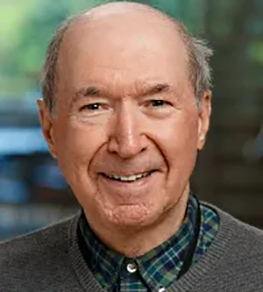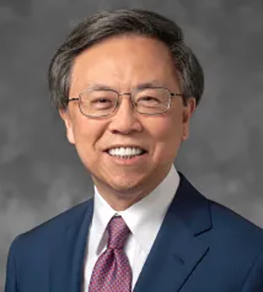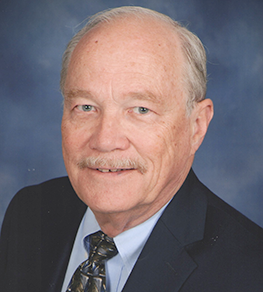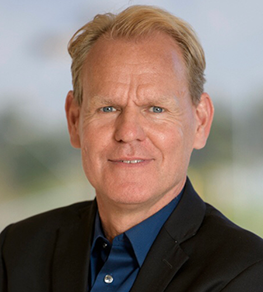2022 Past Presidents’ Bridge-to-the-Future Symposium
Monday, September 26
8:30 AM – 10:30 AM
In 2022, we will be marking the 50th annåiversary of our establishment of the American Society for Photobiology as the premier international photobiology society. To mark this occasion, we are organizing a Symposium whose description follows:
- Introduction by Frank Gasparro (virtually) and Albert Girotti (in-person). There will be anopportunity for any previous past president to make brief comments thinking retrospectively
- 50 Year Retrospective [speakers: Frank Gasparro (virtually) and Albert Girotti (in-person) (30 min total)
- Three prizes to high school students will be awarded (Gold, Silver, Copper). Student gold medal award lecture: The winner will make an oral presentation at the symposium (20 min).
- Presentation of the Kendric C. Smith Bridge to the Future Awards (see below). Recording and live online. We hope for Dr. Smith to be present (virtually) and to also show a recorded video of him.
- Special Invited Lecture: Where is Photobiology and ASP Heading in the next 25 to 50 Years (Greer)
- There will be video remembrances from 25th ASP meeting (1997 in St. Louis). Video stations will be placed in some of the meeting areas
Competition for the KC Smith Bridge to the Future Awards
Early in the Fall announcement: High school students who compete in their local science fairs for 2021/2022 will be able to submit their photobiology-related project posters (as 5 minute videos) to an ASP Committee (of past-presidents) to compete for one of ten travel awards to our 50th Annual Meeting. These posters will be judged and three prizes awarded (Gold, Silver, Copper). The winner will present orally at the symposium.
Projected Funding:
- Industry
- Past-President Donations (Suggested Levels: Platinum $1000, Gold $500, Silver $250, Copper $100)
We encourage you to consider making a donation to support this event. Contact the ASP secretariat for information on how to donate. E-mail: headquarters@photobiology.org
Thank you to our sponsors for generously supporting this symposium.
-

Thomas Coohill
I am still working full time (turn 80 on my next BDay) at Siena College and am part of a new NASA proposal which, if funded, will be a two year commitment. Currently I am sitting here grading physics finals. It might interest some to know I was awarded the humanitarian Order of Saint Michael from the Xaverian Brothers for my work in Haiti. Not being able to travel feels like being in a cage.
-

Frank Gasparro
Frank Gasparro is a 44 year member of the American Society for Photobiology. His lab is dedicated to unraveling the mechanisms underlying psoralen based photoimmunotherapies. he secured his current position at Hamden Hall Country Day School where he teaches AP Chem and directs a research program. His students not only have won CT science fair prizes, but also have presented at international research meetings like the American Chemical Society as well as ASP. One of these students first authored a paper using a novel technique to characterize psoralen photoadduct formation in oligonucleotides synthesized at Yale’s Keck facility. The research program at Hamden Hall is conducted in collaboration with researchers at Duke University and Immunolight Inc, LLC. He and Al Girotti originated the idea of a Past-presidents Symposium in 2022 to celebrate the 50 years of achievement for ASP. In addition they proposed the Kendric Smith Bridge to the Future Symposium in which select high school student science projects would be invited to attend the meeting with a parent or their research advisor. They will present their work and a committee of Past-Presidents will award three prizes. Two other presentations will take place – one a retrospective looking back and one prospective regarding the future of the ASP.
-

Albert W. Girotti
I received a B.S. in Biology from the Massachusetts Institute of Technology and a M.S. and Ph.D. in biochemistry from the University of Massachusetts. After three years as a postdoctoral fellow at Cornell University Medical College, I started my academic career at the Medical College of Wisconsin in 1969, when MCW was still located on the Marquette University campus. Along the way I have served on numerous intra- and extra-mural committees and panels (e.g. NIH study sections) and editorial boards of scientific journals. I was interim chair of the Biochemistry Department from 1991-1992 and have received numerous research grants from NSF and NIH/NCI, serving as Program PI on an NIH/NCI Program Project from 1989-1996. After serving as ASP president (1995-96), it was a great pleasure for me to help organize the Society’s 1997 25th anniversary meeting in St. Louis. I have a longstanding and ongoing interest in anti-cancer photodynamic therapy (PDT), including (i) lipid peroxidation-based mechanisms of cancer cell killing by PDT and (ii) PDT-stimulated resistance mechanisms - particularly those involving low-level tumor-generated nitric oxide (NO). I have published approximately 170 research papers, reviews, and book chapters related to my research and continue to write reviews about collaborative study findings. In 2020, I was deeply honored by receiving the ASP 2020 Lifetime Achievement Award, which I will always treasure.
-

Margaret Kripke
I have been retired for a few years now and spend my time with my two horses, my daughters, and my friends (pre-covid, of course). I have also devoted considerable effort to trying to raise awareness by the cancer research community of the cancer-causing substances in the environment and the role their removal could play in cancer prevention. To that end, I am a member of the Cancer-Free Economy Network and on the Board of Directors of the Silent Spring Institute.
-

Henry Lim
Henry W. Lim is the former Clarence S. Livingood chair and chairman of the Department of Dermatology (1997-2017), Henry Ford Hospital, and current Senior Vice President for Academic Affairs, Henry Ford Health System, Detroit, Michigan, USA. He received his M.D. (cum laude) from SUNY Downstate Health Sciences University, Brooklyn, New York, USA, and completed his dermatology residency at New York University School of Medicine. He is a faculty member of the Department of Dermatology at Henry Ford Health System in Detroit, MI, where he sees patients, does research and teaches trainees.
After serving as the president of the American Society for Photobiology, Dr. Lim has served as president of the American Academy of Dermatology (AAD), American Board of Dermatology, American Dermatological Association, International Union of Photobiology, and National Council on Skin Cancer Prevention. In 2019, he was elected as a Board member of the International League of Dermatological Societies. He has received multiple presidential citations from the AAD, and in 2020, he was awarded an Honorary Membership of the AAD. He has been recognized with the Fred W. Whitehouse, MD, Distinguish Career Award of the Henry Ford Medical Group, European Academy of Dermatology and Venereology International Scientific Achievement Award, International League of Dermatological Societies Certificate of Appreciation for International Leadership, Finsen Medal from the International Union of Photobiology, and Alumni Achievement Award for Distinguished Service to American Medicine, College of Medicine, SUNY Downstate. Dr. Lim is honorary member of the following international dematological societies: Austria, France, the Philippines, China, the Baltics, Spain, and Taiwan.
He has published more than 500 articles, edited 9 textbooks, and served on editorial boards of several journals. He is an internationally-recognized authority on photodermatology.
-

Stephen Ulrich
I retired from MD Anderson on August 31, 2017, right in the middle of Hurricane Harvey coming ashore. I have really enjoyed not worrying about the next grant deadline, not dealing with journal reviewers and editors, not getting up to attend 7:00 AM research council meeting to listen to President and his staff talk about something trivial that could have been put in a well written e-mail. I am enjoying not having a schedule and just enjoying life.
-

David Sliney
He is active in national and international standards committees related to photobiological safety and currently am very much involved in issues related to safety of germicidal UV-C guidelines for human exposure.
-

Frances Noonan De fabo
In honor of her husband Ed De Fabo
After completing a PhD in Microbiology/Immunology at the University of Queensland, Australia I went to the US to do post-doctoral studies with Margaret Kripke at Frederick Cancer Research Center. There I worked on the systemic effects of UV radiation on immunity which the group had recently described and started a long collaboration with UV photobiologist Ed De Fabo. These investigations were continued at Flinders Medical Centre, South Australia. When Ed and I married in 1986 I returned to the US and we continued investigating UV effects on the immune system, in particular the role of urocanic acid, at The George Washington University in Washington DC. In 1999 we commenced a long collaboration with Glenn Merlino and later Raza Zaidi at the NCI, NIH. We developed the first mouse model for UV-induced melanoma and found that, consistent with epidemiologic data, neonatal UV irradiation was necessary for melanoma induction and used this model to investigate the roles of UVB and UVA in melanoma. We retired from GWU in 2010 and, following Eds death in 2019, I have moved back to Australia. I maintain an interest in UV photobiology in particular the role of UV in melanoma.
-

Georg Wondrak
Well... what can I say ... My tenure as ASP president (2016-2018) has been an incredible experience, breathtaking at times, challenging, yet always rewarding ... just as real life. I guess it is all implied in the ASP motto ‘LUX ET VITA’. Staying in the context of light (and photons/ excited states etc., for that matter), I want to share something that I picked up somewhere, many years ago: ‘It is better to light a candle than to curse the darkness.’ Onward, ASP, all the friends I made, the mentors, the wonderful students associated with us, colleagues, and compañeros de viaje along the scientific journey. The future is ours.
LUX ET VITA ... with much gratitude,
GEORG